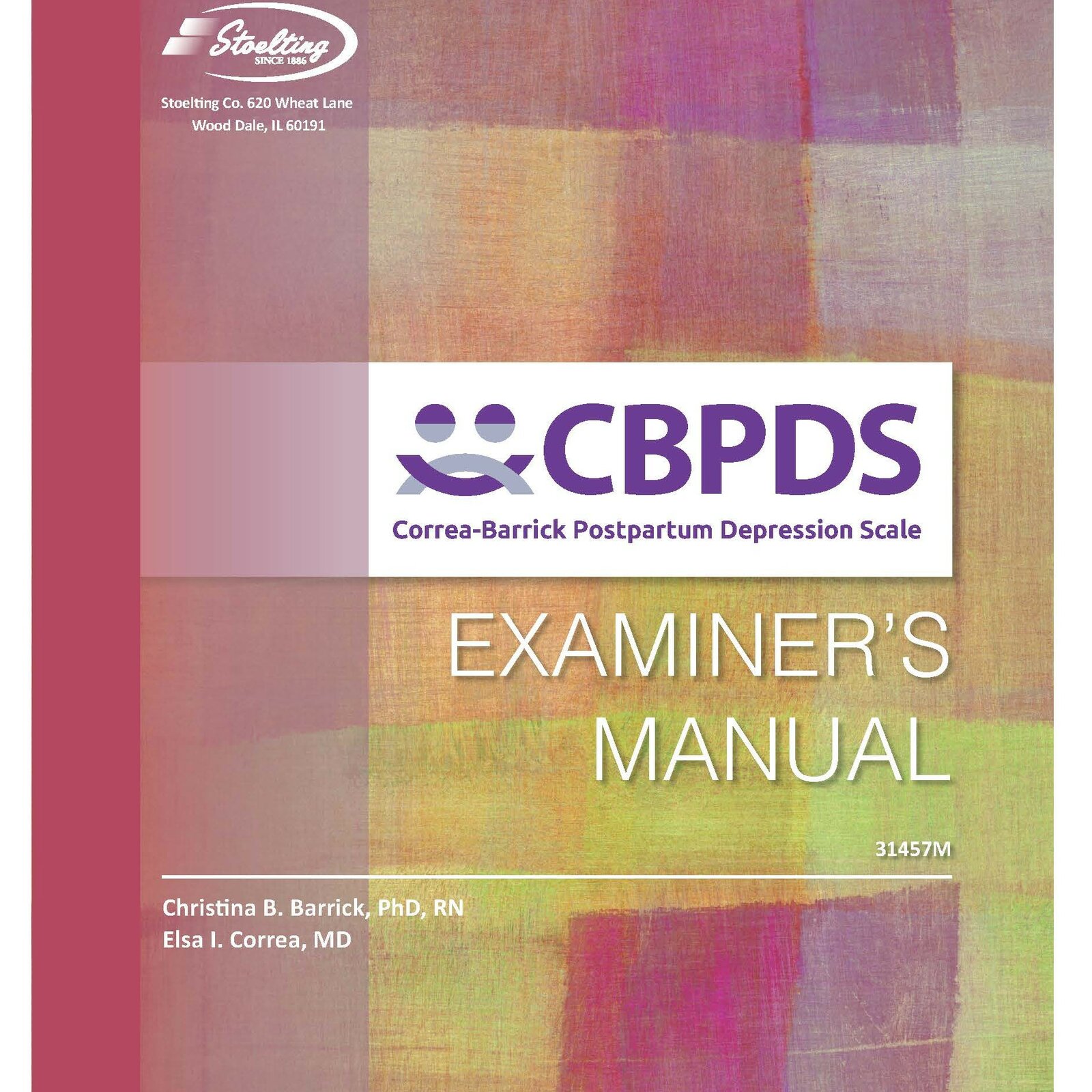Please specify the quantity of product(s).



Correa-Barrick Postpartum Depression Scale (CBPDS)
| Item | Product | Price | QTY |
|---|---|---|---|
| 31457 | Correa-Barrick Portpartum Depression Scale (CBPDS) Kit | $155.00 | |
| 31457R | CBPDS Record Forms, Pk/25 | $67.00 | |
| 31457M | CBPDS Manual | $81.00 | |
| 31457C | CBDS and CBPDS COMBO Kit | $280.00 |
Age Range: Any Age Postpartum Women
Time: 5-10 minutes
Restricted Use: None
Authors: Christina B Barrick, Ph.D. and Elsa I. Correa, M.D.
The Correa-Barrick Postpartum Depression Scale (CBPDS) measures the severity of postpartum depression. It is a 20-item Visual Analogue Scale (VAS), which is less taxing for the depressed respondent than a four-item response questionnaire. Using the patented response technology, when responding to a VAS item, respondents specify their level of agreement to a statement by indicating a position along a continuous line between two end-points. This continuous (or "analogue") aspect of the scale differentiates it from discrete scales such as the Likert scale. There is evidence showing that visual analogue scales have superior metrical characteristics than discrete scales, thus a wider range of statistical methods can be applied to the measurements.
A Visual Analogue Scale (VAS) is a measurement instrument that tries to measure a characteristic or attitude that is believed to range across a continuum of values and cannot easily be directly measured. For example, the amount of depression that a patient feels ranges across a continuum from none to an extreme amount of depression. From the patient's perspective this spectrum appears continuous ± their depression does not take discrete jumps, as a categorization of none, mild, moderate and severe would suggest. It was to capture this idea of an underlying continuum that the VAS was devised.
This scale has a new feature not found in other postpartum depression scales, which is color sensitivity impairment. Items are reverse worded to prevent response bias.
The administration of the test may be either individual or group administration. Items are formatted according to a 10 cm line visual analog scale. Scores 0-10 points represent “No depression” to “Most depressed I have ever been.” The CBPDS was designed for use by primary care providers and nurses, including maternity and public health nurses in screening for severity of depression in postpartum women.
Complete Kit includes the CBPDS Manual and a package of 25 Record Forms.
References
- Barrick, C. B. (1994). Psychometric assessment of two new self-rating depression scales: The schiraldi depression check-up and the correa-barrick depression scale (Order No. 9507909). Available from ProQuest Dissertations & Theses Global. (304102045).
- Barrick, C., Kent, V., Crusse, E., & Taylor, D. (2012). Psychometric assessment of the Correa–Barrick postpartum depression scale. Journal of Affective Disorders, 141(2-3), 246-254.
- Barrick, C. B., Taylor, D., & Correa, E. I. (2002). Color sensitivity and mood disorders: Biology or metaphor? Journal of Affective Disorders, 68(1), 67-71.
- Barrick, C. B., Taylor, D. E., Correa, E. I., & Haase, M. (2002). Psychometric assessment and clinical application of the correa-barrick depression rating scale / commentary. Clinical Nursing Research, 11(4), 363-81.